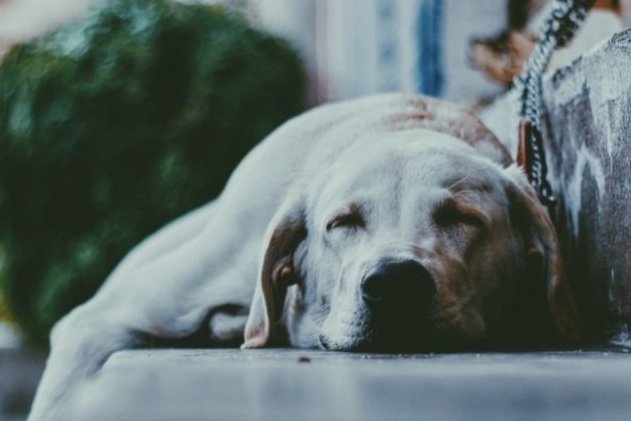Easy Winter Preparation Checklist for Homeowners in the DMV.
/16 Things Every Homeowner Should Do Before Winter
Use this checklist to prepare your home for winter now. Frantically trying to winterize your home before a snowstorm when it's freezing cold outside is definitely no fun. As Exclusive Buyers Agents with Buyers Edge, we advise our homebuyer clients how important it is to maintain their homes all year round. (That is one of the main reasons we created our free, online Recommended
Residential Services and Contractor List.) However, after a busy summer, fall is often an excellent time to refocus on your home maintenance needs and get it winterized in preparation for the cold winter months ahead. We have created this Home Winter Maintenance Checklist with 16 Top Tips to help homeowners. When followed, it is a step-by-step review of both the important structural and mechanical systems that must be in good working order before winter is in full swing. Get this done now, and then relax with a hot toddy or hot chocolate around a roaring fire. Marshmallows anyone?
Winterize the Heating System:
1. Have an HVAC Company Check System.
This first step is probably the most important system that needs to be prepared heading into winter. Many homeowners have a yearly contract with a top-rated HVAC company to clean and keep their systems running efficiently and to ensure priority service if there is a problem during cold spells or winter storms. Make sure to change furnace air filters every couple of months or longer with better quality filters. If your HVAC includes a built-in dehumidifier, make sure you or the service contractor changes that filter as well. If you have a hot water radiant heat system, there will likely be circulating pump attached to the furnace. Find the tiny oil cap and drop 10-15 drops of (3 in1 oil) to keep bearings lubricated. If you have radiators, you need to bleed the air out of each one with a special key that can be purchased at any hardware store. Lastly, check all exhaust vents. Furnaces, boilers, and gas water heaters can vent through a chimney or to a plastic pipe running through a sidewall. These vents must be open and free of debris. Blocked vents will effect the furnace’s energy efficiency and inhibit the proper ventilation of gases. If backed up or blocked, they can be a dangerous source of carbon monoxide.
2. Install a Programmable Thermostat
This also may be the time to consider purchasing and installing a programmable thermostat. According to Energy Star, most consumers save an average of 8% on their cooling and heating bills when they use one correctly.
3. Check Carbon Monoxide and Smoke Detectors
Make sure to check and change batteries in carbon monoxide and smoke detectors. Most batteries need to be changed annually unless you know the age and model of the detectors inside your home. Many now have 10-year batteries. If you are unsure, go ahead and replace the detectors with a newer model or just change the batteries.
Winterize Water Pipes:
4. Drain Exterior Faucets
Exposed pipes and exterior faucets are particularly vulnerable during the winter months. Freezing temperatures or unexpected cold spells can cause pipes to burst. These repairs are traditionally expensive fixes. Remove all garden hoses from outdoor faucets or hose bibbs. Turn off any shut-off valves feeding those exterior faucets from inside the house. Ensure to drain water from the hose and exterior faucets. This will stop water trapped within from freezing and causing an interior leak.
5. Insulate Exposed Pipes
If there are any exposed pipes in uninsulated spaces like attics, crawl spaces, or walls, make sure you buy an insulated sleeve made for just this purpose and cover the pipes. Imagine a burst pipe in a crawl space.
6. Winterize Sprinkler System
Don’t forget to winterize your sprinkler system. If you have a landscape company that handles this, they should do it before the first frost. For most homeowners in the DMV (District of Columbia, Maryland & Virginia), October should be your target date. If you are handy and trust your skills, apparently, it is easy to drain sprinkler systems by draining out the water after the water has been shut off. Water must be blown out per system instructions to ensure that all the water is out of the pipes to prevent costly repairs in the spring.
Inspect the Roof, Fireplace, Flue, and Gutters:
6. Inspect the Condition of Roof
You may be able to evaluate the roof condition with binoculars from the ground or hire professionals to safely inspect these 3 key areas. Check for loose or missing shingles on the roof. They should be replaced immediately. Check the flashing for both the roof and around the chimney in order to avoid winter leaks.
7. Inspect and Clean the Chimney Flue and Cap
With winter cold weather comes the use of woodburning or gas fireplaces inside the home. Chimney flues should be professionally cleaned once a year if the fireplace is used regularly. The crown at the top of the chimney should be intact and angled away from flue liner. Make sure the chimney cap is cleaned and clear of nests. This will keep birds, squirrels, and other varments from making a home in your chimney.
8. Damper and Draft Operation
Check the damper and make sure it is operating properly. Does the damper fully open and close? Can it be locked in the open or closed position when desired?
9. Inspect and Clean Gutters
Ensure gutters are free of leaves and gunk. This will prevent the chance of frozen, weighed-down, leaf-filled gutters from getting damaged and causing expensive gutter repairs. Clean gutters also will help prevent ice damming, This occurs when gutters can’t drain, and the standing water freezes inside the gutter. If the ice/snow is allowed to build up, it may make its way under the roof shingles and cause water damage to the interior walls once that ice melts.
10. Clear Downspouts
Don’t forget that it also is important to make sure that the downspouts discharge water is at least 6-8 feet away from the home’s foundation. If this is not the case, add black pipe extensions and make sure the pipe flows downhill and away from the property.
Prepare Garden Tools, Landscape, and Outdoor Patio Furniture
11. Snow Blower, Lawnmower, and Power Tool Care
Store lawnmowers and power equipment indoors for the winter whenever possible. Drain the gas engine if you have a gas mower or power tool. If it isn’t possible, add an engine stabilizer to the remaining fuel in the tank and run for a few minutes to let the stabilizer reach the carburetor. In the spring, this should help power equipment start right up.
Most importantly, make sure your snow blower is operating correctly! If it isn’t, get it to the repair shop before the end of October. You’ll regret it if you don’t, come the first snowstorm.
Don’t forget to check the condition of your snow shovels for your driveway and car. Stock up on a pet-friendly ice-melting compound to melt ice on walkways and driveways. Buy them any time of year before the winter, when supplies are low, and prices go through the roof.
12. Prepare Water Fountains
Unplug, clean, and cover water fountains so they can be enjoyed the following growing season.
13. Cover Outdoor Furniture
Covering expensive patio furniture with proper, heavy, waterproof covers is a good idea. Then store the inside if possible. This helps outdoor furniture last years longer.
However, not all patio furniture needs to be taken inside. It all depends on what it’s made of. Teak furniture can be left outside in the winter months without being damaged. Other woods can not take the extremes of freezing snow and ice. If there’s any doubt, it’s best to place it undercover. As they say, “Better safe than sorry.”
14. Outdoor Grill Care
Now is a good time to thoroughly clean outside gas grills while the outside temperature is comfortable and the outdoor water source is still turned on. It’s a good idea to cover it for the winter, but most homeowners like to keep grills accessible even in the cold weather so they can enjoy a fun winter barbeque on a snowy night.
15. Bring in Outdoor Plants
Before the first unexpected freeze of the season, bring in those beloved plants that go inside or out, depending on the season. It can be distressing when plants are lost needlessly.
Save your back and use a rolling dolly when maneuvering heavy plants to their new inside location. Don’t forget to purchase new, heavy-duty, clear plastic plant saucers to protect interior floor and carpets.
16. Mark Driveways and Garden Beds Clearly
Before long, the first snowfall will surprise all of the DMV. Mark your precious garden beds and the edge of the driveway with orange fiberglass poles from Home Depot. It will help the snow plow, the delivery drivers, the kid next door, or the homeowner see a clear path when shoveling or snow blowing. Easy peasy.
LET IT SNOW! YOU'RE READY AND IN GOOD HANDS!
Are you looking for “bonus winter preparation for your home tips”? Here are eight more.
Don't forget to reverse your ceiling fans. Warm air rises. Reversing the fan creates an updraft, which helps reduce energy costs. Warm air will circulate in the room, and your home will be heated more efficiently.
Bring a tree specialist to trim trees and branches that may cause damage during severe weather. Late fall and winter are excellent times for tree trimming.
One more time, for good measure - test carbon monoxide and smoke detectors!
Plant your Spring bulbs.
Clear out bird nests from bird boxes to make them super inviting next Spring.
Do a thorough cleaning of hummingbird feeders and bring them inside.
Buy, chop, and stack firewood for all those romantic, cozy fires throughout the cold winter months. Make sure your gas fireplaces are operating correctly and get them serviced.
Don’t forget to take off the batteries from electric bikes and store them in a warmer location.
Related:
Help! What can I do to protect that piece of property in front of my house?
How to Set Up a Perfect Guest Bedroom? Use the Buyer's Edge Guest Bedroom 61 Top Tips Checklist.
Very Handy Homebuyer Help - Home Renovation Costs - Ballpark Estimations Before You Buy
Updated and revised from January 2018




































